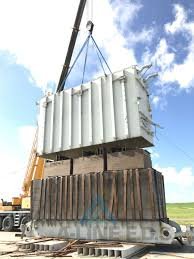When it comes to handling outdated or non-functional transformers, Transformer Dismantling is the safest and most environmentally responsible approach. These large electrical components hold valuable metals and materials, but removing them requires a proper step-by-step process. Whether you’re a facility manager, an industrial recycler, or simply want to recover scrap value, understanding the transformer dismantling process can help maximize profits and minimize risk.
In this guide, we’ll walk through the full process of dismantling a transformer—from preparation to final recycling—with safety, environmental, and commercial factors in mind.
Step 1: Initial Assessment and Safety Precautions
Before any physical work begins, a complete inspection of the transformer is necessary. Check the condition of the unit, identify any hazardous materials such as oil or PCBs, and ensure it has been completely de-energized.
Safety first. Transformer dismantling involves handling heavy equipment and possibly hazardous fluids. Workers must wear PPE, follow lockout/tagout procedures, and have training in industrial dismantling and electrical decommissioning.
Step 2: Site Preparation and Equipment Setup
After assessing the unit, prepare the site by clearing the area around the transformer. Place spill containment barriers if the transformer contains oil. Arrange industrial recycling equipment such as cranes, cutting tools, and containment bins for different scrap types.
Make sure to also coordinate with certified scrap equipment buyers if you’re planning to sell the recovered parts. Selling directly to recyclers can save time and increase return.
Step 3: Removing the External Components
Start by dismantling external parts like bushings, radiators, and terminal boxes. These are often lighter and easier to handle. This stage also makes the core and internal materials more accessible.
Many external parts contain non-ferrous metals that have strong resale value in the industrial scrap metal market.
Click here to sell industrial scrap metal
Step 4: Oil Draining and Fluid Disposal
If the transformer contains oil, draining it is a critical step. Oil should be tested for PCBs. Non-PCB oil can be filtered and recycled, while PCB-containing oil must be handled as hazardous waste.
Partner with industrial disposal or demolition disposal experts for safe handling and documentation.
Step 5: Core Dismantling and Metal Recovery
Once the unit is dry and clean, the core is disassembled. The core contains laminated steel, copper windings, and sometimes aluminum. These metals are valuable and can be sorted for recycling.
Proper sorting ensures maximum value when selling to metal scrap buyers or scrap recycling industries. Consider weighing and documenting recovered material to track value.
Recycle transformer core with trusted buyers
Step 6: Transporting and Selling Scrap Components
Once dismantled, the materials—steel casing, copper, aluminum, and insulation—need to be transported to scrap yards or recyclers. It’s best to work with reliable scrap buyers in USA that specialize in transformer scrap.
Some top buyers offer pickup services and instant quotes for copper windings, transformer steel, and even scrap wire.
Find the best scrap wire buyers here
Why Transformer Dismantling Is Worth It
Transformer dismantling is not just about compliance—it’s also a smart way to generate income from otherwise idle equipment. Here’s why it makes sense:
- High-Value Metals: Copper and steel can fetch high prices in the scrap metal industry.
- Environmental Impact: Proper dismantling reduces landfill waste and promotes industrial recycling.
- Safety Compliance: Safe dismantling avoids legal issues from improper disposal of oil and components.
For larger operations, industrial dismantling services can be hired to handle multiple transformers and equipment simultaneously.
Explore full-service industrial dismantling options
Things to Consider Before Dismantling a Transformer
- Legal Compliance – Ensure you’re following EPA and local disposal laws.
- Hazardous Materials – Know how to identify and safely handle PCBs and asbestos.
- Buyer Reputation – Partner with licensed and experienced scrap buyers USA to avoid scams.
- Logistics – Account for equipment transport, crane access, and site restrictions.
Conclusion
Transformer Dismantling is a detailed process that, when done right, yields both financial and environmental benefits. From planning and preparation to safe removal and material resale, every step plays a crucial role in the success of a dismantling project. If you’re looking to turn unused transformers into profit while ensuring safety and compliance, now is the time to act.
Looking for reliable partners to handle your dismantling and scrap sale? Contact the experts at JJ Liquidations—they offer top-notch services in industrial scrap, equipment removal, and recycling support.



